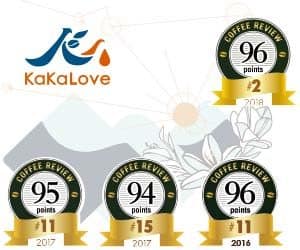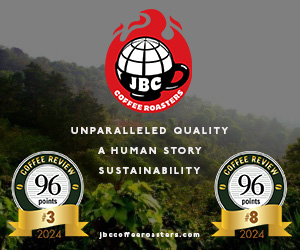Acidity is a term used in at least three overlapping ways in the world of specialty coffee. For the coffee aficionado, acidity is the dry, bright sensation that distinguishes fine high-grown coffees from duller, low-grown coffees. For these sophisticates, the brighter and more acidy a coffee the better. But for many other coffee drinkers, acidity is a word for an upset tummy and an unpleasant astringent sensation that ruins a beverage they otherwise enjoy.
And for the technically inclined, acidity is chemistry, something to be measured and quantified. The common measurement for acidity is pH, with a figure of 7.0 indicating a neutral substance and numbers under 7.0 indicating increasing levels of acidity. Lemon juice, for example, registers a pH of around 2.0, tomato juice 4.0, and milk 6.5. A typical bright, acidy breakfast coffee might register a pH of 4.7 or so. I find that my palate tends to identify acidity as a major component of flavor at a pH of 5.0 or below.
Unfortunately for those who would like to rely on numbers alone, rather than taste, the measured pH, or relative acidity/alkalinity, of a coffee may does not equate in a simple way either to the bright, dry sensation admired by aficionados nor to the stomach-threatening edginess deplored by acidity avoiders. Coffee chemistry is complex, and the relationship among the various kinds of acids found in coffee and other factors that influence taste (and, presumably, impact on digestion) of brewed coffee the impact of these acids on the body is intricate and only partly understood. Nevertheless, our modest experiments suggest that a coffee brewed at normal strength that registers a pH of 5.0 or above deserves to be called a “low acid” coffee.
Acid-Avoiders Neglected
Ever since I began listening in to coffee drinkers via e-mail I’ve been struck by how the specialty coffee establishment, with its infatuation with big, acidy coffees, has overlooked both the needs and the palates of those who might prefer less acidity in the cup. I also suspect that a preference for sweeter, less acidy coffees may be behind the current popularity of extremely dark-roasted coffees. Dark roasting tends to kill acidity while simultaneously developing certain bitter tastes that mask it.
What if American specialty roasters were to begin paying as much attention to developing a sweet, low-acid Brazil as they do to a blazingly acidy Costa Rica or Kenya?
If they did, perhaps the overlooked Americans who prefer a sweet, low-acid coffee might be better served than they are now, when their main option is coffee roasted so dark that not only the acidity, but most of the rest of the flavor, has been relegated to the roasting chimney.
Not a Lot of Options
Certainly, if this month’s sampling is any indication, there are not many options available to a coffee drinker in search of flavor without acidity.
Coffee Review assembled a group of coffees that embody a variety of strategies to delivering a flavorful but low-acid cup. They include coffees treated to reduce acidity, and other “irritants,” coffees with an acid-buffering agent added, low-acid Sumatras brought to an acid-reducing dark roast, lower-grown (and hence lower-acid) Brazil and India coffees, one naturally low-acid blend, and coffees that have been aged or “monsooned,” both procedures that reduce acidity.
Surprises but no Revelations
Among this assortment of coffees I was hoping for at least one low-acid revelation — a coffee with little acidity but memorable richness, complexity, sweetness, resonance.
Not this time around. There were some pleasant surprises — the two India coffees and the aged Sumatra were far better and more interesting than I had expected — but no real standard-setters for low-acid quality emerged from the pack.
One thing is certain. Treating the beans or dumping antacid compounds into them, or dark roasting them to the limit of possibility, is not nearly as effective in producing a fine flavorful low-acid cup as finding a lower grown coffee with naturally low acidity that has been picked and processed with care and brought to a moderate roast that develops the sugars without burning them. Yet even here, with the India Mysore from A’Roma Roasters, the Martinez Brazil, and the Café La Semeuse Classique blend, I was disappointed by the lack of resonance and round, chocolaty sweetness.
Everything but the Sweetness
Perhaps the problem is that lower grown, less acidy coffees often are assumed to be inferior to start with, and consequently are not picked and processed with the same care lavished on the finest higher grown coffees. I suspect, for example, that the lack of sweetness in the otherwise impressive A’Roma India Mysore is owing to too many unripe, green coffee cherries in the final mix. Nothing new here, of course. Currently only a handful of the world’s coffee origins are consistently processed from strictly ripe, sweet fruit.
Such generously sweet, low-acid coffees do exist. At least three coffees I cupped recently fit the big, sweet, low-key but resonant profile: a Brazil Fazenda Lagoa from The Roasterie in Kansas City, the limited release, prize-winning Brazil Fazenda Estiva from Diedrich Coffee in the Los Angeles area, and Nizza Blend from La Colombe Torrefaction in Philadelphia. All of these coffees are naturally sweet, chocolaty, and rich, with little bite or snap.
But for those acid-sensitive coffee drinkers looking for an interesting dark-roast coffee, or a dry, cocoa-toned moderate roast, this month’s cupping does offer some intriguing and attractive options.
Degree of Roast, pH, and Flavor
Here are the ratings of the ten coffees, matched to their pH, or instrument-measured acidity, and their degree or darkness of roast:CoffeepHDegree of Roast Rating Guatemala Antigua, Coffee Tamer added4.9Medium83Trader Joe’s Low-Acid Coffee4.9Medium83Martinez Brazilian Capim Branco5.1Medium86A’Roma Indian Mysore La Semeuse Classique5.2Medium-Dark85A’Roma Blue de Brasil5.4Dark80Silver Canyon Sumatra5.6Very Dark83Silver Canyon Aged Sumatra5.6Very Dark85Tamer treated Low Acid Coffee, Regular5.7Very Dark70White Horse India Monsooned Malabar5.8Very Dark81
It would appear that dark-roasting is the most efficient way to reduce acidity, choosing a naturally low-acid green bean is the next most efficient way, and treating or adding neutralizer to an otherwise acidy coffee the least efficient approach. Note that, although the Tamer coffee that was treated to reduce acidity does indeed register a low acidity, it is also a very dark-roasted coffee, and (judging from the results with the other coffees) dark roasting may have more to do with its low acidity than does the treatment to which it was subjected.
In terms of taste, the results of this modest sampling are even clearer: Those in pursuit of a coffee with low acidity and high flavor are best served choosing a green bean with naturally low acidity (Brazil, Sumatra, India) brought to a relatively dark degree of roast.
Robert Barker contributed laboratory work to this story.











